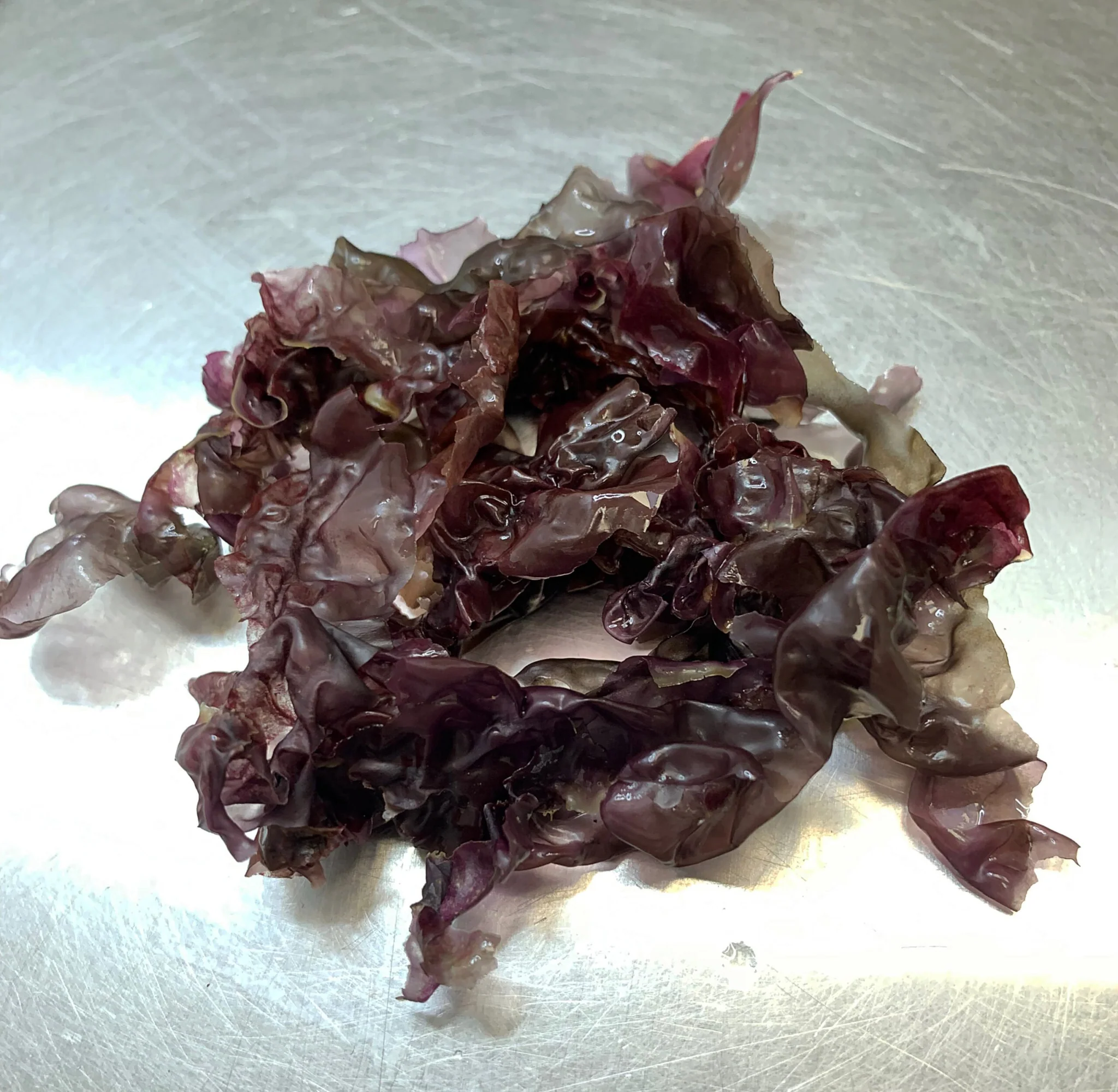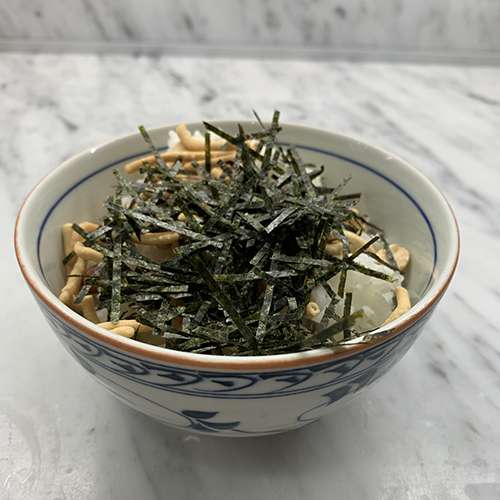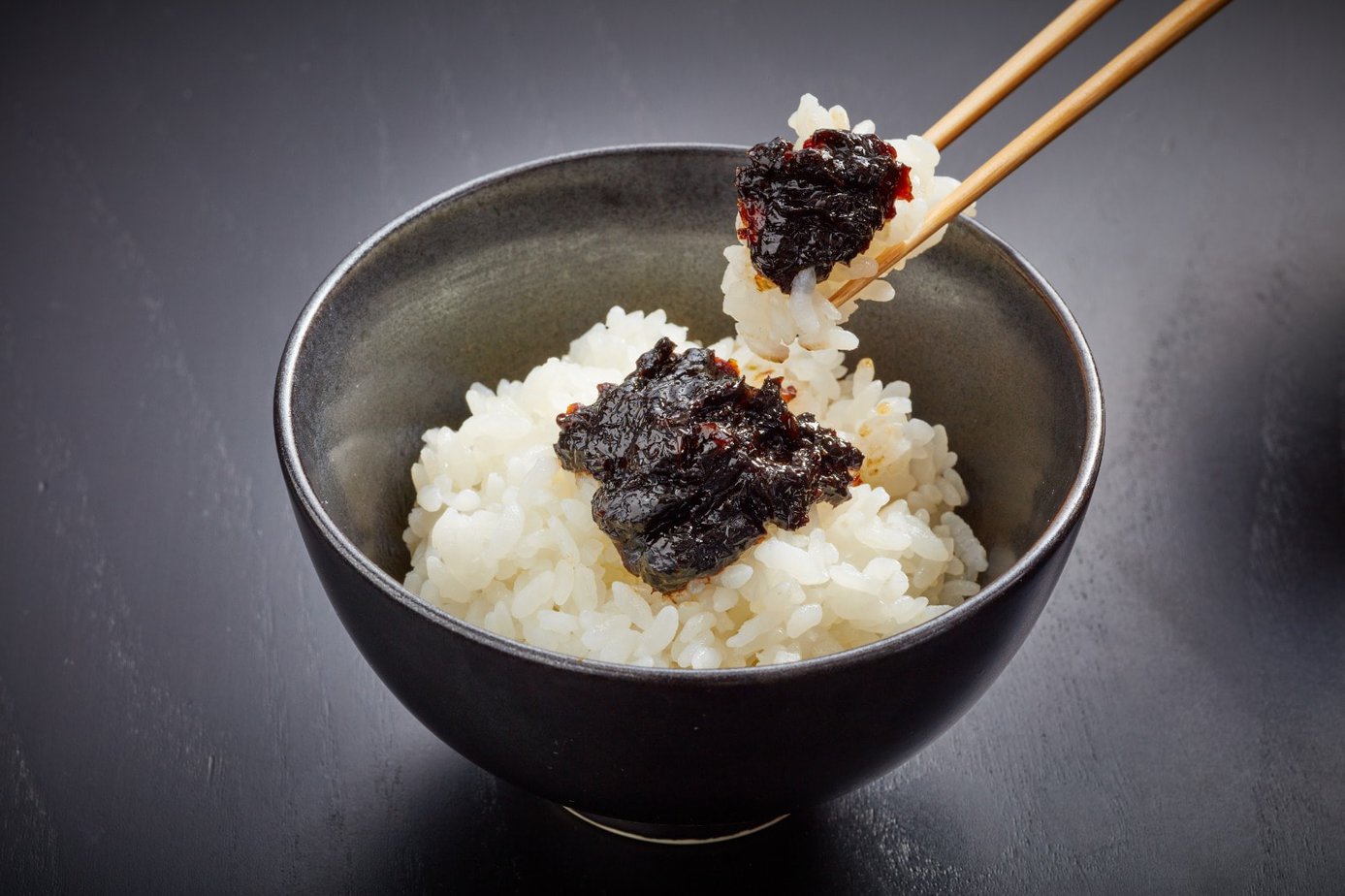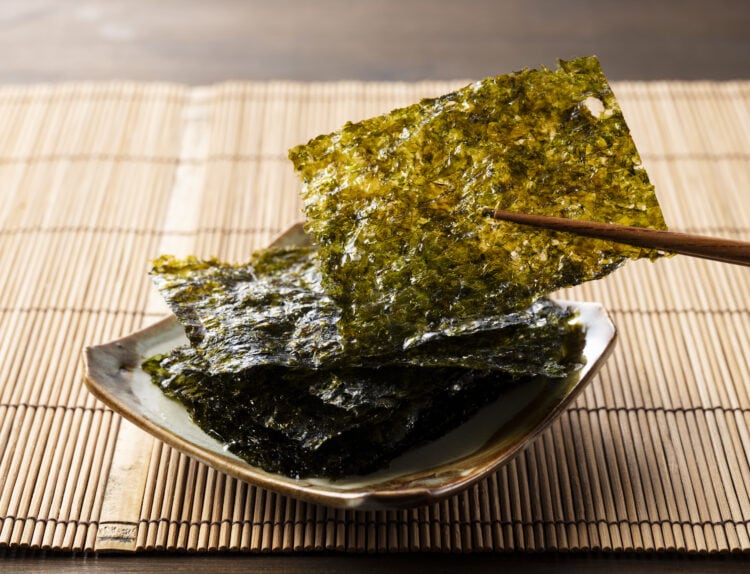If you’re a fan of sushi, maki, or “onigiri, you’re very likely familiar with nori… Nori is t” hat edible dark wrapper that holds the ingredients together while adding salty flavors to your dish. It’s a staple in the Land of the Rising Sun!
What Is Nori?
Nori is a type of seaweed highly prized in Japan. In the wild, these algae can be red, pink, brown, or dark green. Nori itself is made from a reddish algae of the genus Pyropia, which grows on rocks in shallow waters along the coastal areas of Japan. Be careful not to confuse it with aonori

It has been cultivated there for several centuries already. Once “it” is harvested, it’s dried to form nori sheets. The drying process is why they turn green or black, rather than staying red. They are then pressed and cut to allow for the preparation of sushi and other dishes that require it. Unlike Kombu, nori is consumed directly rather than used to flavor broths like dashi

Where Does Nori Come From?
Nori has been produced for several hundred years in Japan. However, we don’t know exactly how long the Japanese have been consuming it.
Some archives seem to show that nori was already known as early as 702 AD. The seaweed was exclusively reserved for the nobility of the time and was consumed wet. It was later, during the Edo period (1603), that nori began to take on the form and texture we associate with it today.
It was also at this time that it began to become popular, first among Japanese commoners, then gradually throughout the rest of the world.
What Are the Benefits of Nori?
Nori is not only rich in flavor, it also has numerous health benefits. Full of micronutrients and vitamins, including vitamin C, this seaweed is actually an important ally in providing the body with what it needs.
To give you an idea: five standard-sized sheets contain 1.3 times more vitamin C than a mandarin orange. It also has a high protein content. 30% of its nutritional composition consists of fiber, like a banana or a tomato.
Like the vast majority of seaweeds, this one is rich in phytonutrients, which has a beneficial effect on arteriosclerosis, high blood pressure, constipation, cancerous tumors, and obesity.
What Does Nori Taste Like?
Nori has a delicate umami taste, which allows it to add real value to the ingredients it’s associated with, such as rice or fish, which have very subtle flavors in the end.

What is described as an iodine or fish taste actually comes from the umami flavor. It’s salty, iodine-rich, slightly reminiscent of mushrooms. Note that when the sheet is grilled, as the Koreans do, the flavors are slightly intensified.
How to Use Nori in Cooking?
There are as many ways to cook nori as there are forms of nori. Here’s a list of variations you can find on the market and ways you can use them:
Nori in Sheet Form
This is the most common form. Nori sheets are particularly interesting for their crispiness, which adds another texture to sushi and other rolled creations.
It is also used to prepare onigiri, nigiri, bibimbap or seaweed rice balls. In this case, you just need to cut the nori sheet into small pieces or chop it with a food processor and mix it with rice, soy sauce and sesame oil. You can even season tamagoyaki, the Japanese rolled omelette.

The thin strips of nori
It’s called “kizami nori”. These are thin ribbons of nori meant to be sprinkled on salads, ramen, omelettes, pasta or noodles, like zaru soba, as a topping or decorative seasoning. You can even use it to make your own homemade furikake.

The nori paste
This form is perhaps the least common. Nori paste, or “nori tsukudani”, is, as its name suggests, nori that has been transformed into a paste and seasoned with soy sauce, mirin and dashi. It is mostly used as a condiment, mainly to season white rice. It can also be consumed directly as tapas, as a topping or as a spread.

You can also add nori to stews or stir-fries such as yakisoba or yaki udon.
Don’t forget to soak it for about twenty minutes and drain it before cooking, depending on your recipe. This is a way to soften it and prevent it from sticking to the sides of your pan during cooking.

Where to find nori?
Nowadays, you can find nori almost everywhere. You can get it in some supermarkets. Asian grocery stores definitely sell it. Otherwise, there’s always the option of online shops.
How to store nori?
Nori seaweed must be stored in the refrigerator once opened. Be sure to store it in an airtight container away from light and moisture, whether it’s dried or raw nori.

